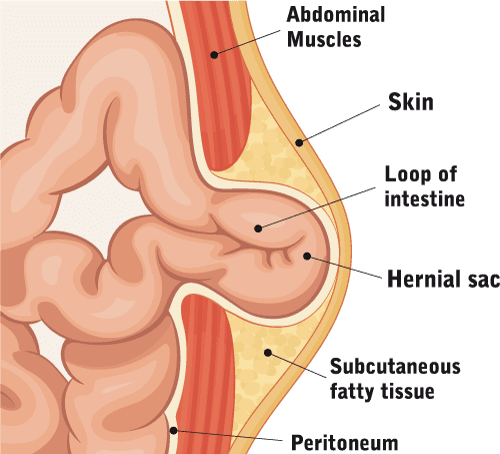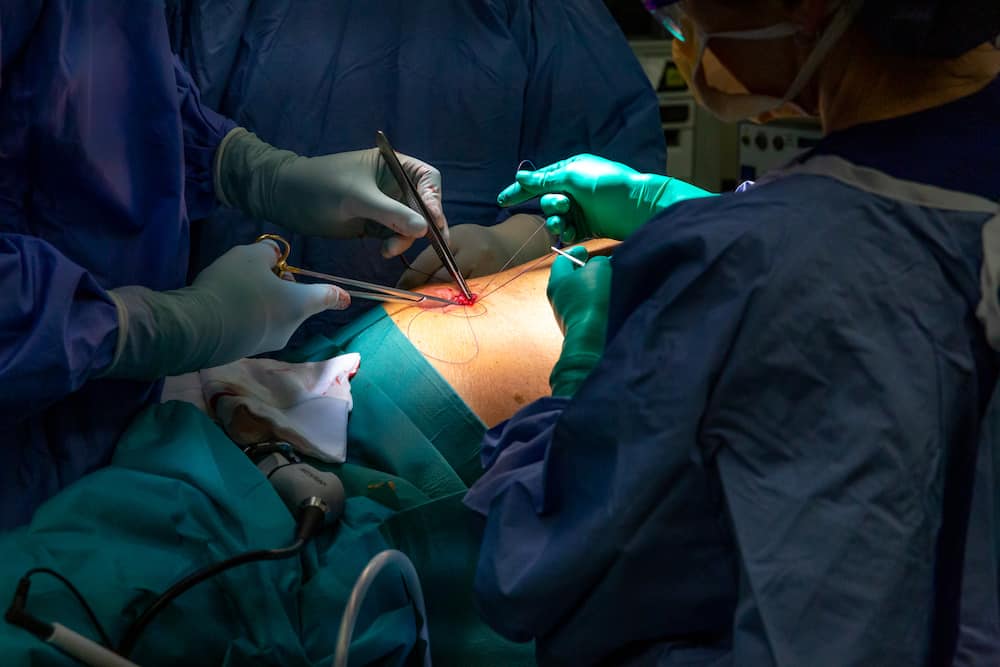What is an umbilical hernia?
Around 20 percent of babies are born with an umbilical hernia, they are generally painless, cause little discomfort, and the majority of these hernias will close on their own, but if they don’t then umbilical hernia surgery may be required into adulthood. Umbilical and paraumbilical hernias can cause significant pain in adults and may also present with a section or knuckle of intestine caught inside them.

Umbilical Hernia Symptoms
- Visible bulge on the abdomen, particularly when coughing or straining.
- Pain/discomfort or pressure at the hernia site.
- The bulge is tender, swollen or discoloured.
A physical exam will determine whether the umbilical hernia can be pushed back into the abdominal cavity (reducible) or if it is incarcerated (trapped). If the hernia is trapped and the blood supply is cut off it is referred to as strangulated, and requires urgent attention.
Umbilical Hernia Surgery
Umbilical hernias do not always require surgery. In newborns, umbilical hernias will almost always heal without surgery. If the hernia hasn’t gone away by the age of 3 or 4, or is causing pain or restricted blood flow, a doctor will likely recommend surgery.
Umbilical hernias in adults are less likely to go away on their own, and over time will generally grow larger and then will require surgery.
Umbilical hernia surgery can be performed as open surgery (open umbilical hernia repair) or laparoscopic hernia surgery (minimally invasive).

Title
Laparoscopic Umbilical Hernia Surgery
Performing laparoscopic umbilical hernia repair surgery, A/Prof Pilgrim will return the bulge back to the abdominal cavity, but rather than making a large incision, the surgery will involve multiple smaller incisions. Hollow tubes are placed in the incisions, gas is used to inflate the abdomen to allow greater visibility and space, and surgical tools including a small camera are inserted into the tubes to perform the surgery.
This minimally invasive form of hernia surgery reduces the risk of infection and means a quicker recovery, and less time spent in hospital. Mesh may also be used in laparoscopic umbilical hernia repair.
